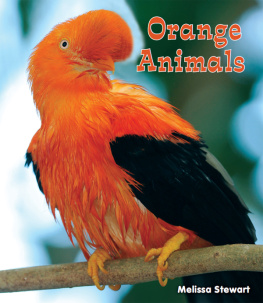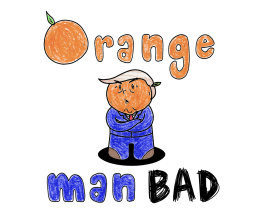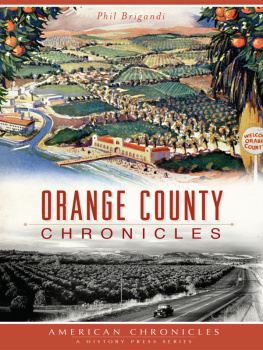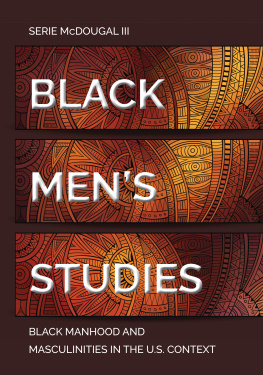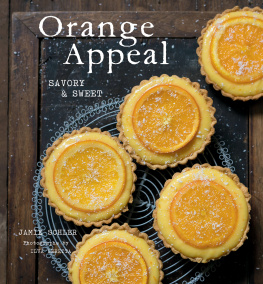
Feminist Perspectives on Orange Is the New Black
Thirteen Critical Essays
Edited by April Kalogeropoulos Householder and Adrienne Trier-Bieniek

McFarland & Company, Inc., Publishers
Jefferson, North Carolina
LIBRARY OF CONGRESS CATALOGUING DATA ARE AVAILABLE
BRITISH LIBRARY CATALOGUING DATA ARE AVAILABLE
ISBN (ebook) 978-1-4766-2519-5
2016 April Kalogeropoulos Householder and Adrienne Trier-Bieniek. All rights reserved
No part of this book may be reproduced or transmitted in any form or by any means, electronic or mechanical, including photocopying or recording, or by any information storage and retrieval system, without permission in writing from the publisher.
Cover images 2016 iStock
McFarland & Company, Inc., Publishers
Box 611, Jefferson, North Carolina 28640
www.mcfarlandpub.com
For my son, Athan,
whom everything is for.
AKH
For Kathy Ransom,
the best law enforcement has to offer and
my own personal cheerleader.
ATB
Acknowledgments
A special thank you to my co-editor for sharing her expertise and knowledge throughout this process. Thanks to all of the contributors to this book for their hard work and enthusiasm in making this an excellent collection that covers a wide range of important feminist scholarship. I also thank my students, who are always excited to discuss the representational politics of Orange Is the New Black, and who teach and empower me every day. And for the strong women behind and in front of the camera, who make a show that has ignited cultural conversations about so many far-reaching issues, and who fiercely challenge the way we see women in television.
AKH
Thank you to the all the contributors to this text for sharing their expertise and talent. Working with you all has been a privilege and I have learned so much from each of you. These essays are a reflection of outstanding scholarship.
I thank my always feminist partner-in-crime and official book goddess, Patricia Leavy. I also thank Angie Moe, the greatest dissertation chair in the galaxy. Thanks to the usual suspects in my life for their support, my soul-sisters Efua Akoma and Beatrice Yarbrough and their families, Lee Paulsen and family, the Clapper twins, Andy and Dan and their families, the Spertis, the Triers, the Bienieks, Chastity Orrship, Vadzim Sheika and Bethany Kelly. I thank Carrie Buist for always responding to my texts so we can gossip about Orange Is the New Black. To Catherine Kelly, thanks for being as big a pop culture junkie as I am. Thanks to my four-legged pals Mara and Charlie for the constant company and to my two-legged husband Tim Bieniek who is just as nerdy and awesome as he was in 1997. Thanks to Rick and Deanne Trier for raising me right.
ATB
Introduction: Is Orange the New Black?
April Kalogeropoulos Householder and Adrienne Trier-Bieniek
From the classroom to the water cooler, Orange Is the New Black (OITNB) has been one of the most talked-about shows to emerge from new internet media technology in the 21st century. Nominated for 12 Emmy awards in its first season, OITNB has garnered both critical and popular attention for its breakthrough characters, who have pushed the boundaries of how women are represented on television, as well as for Netflixs use of streaming technology, which has produced the cultural phenomenon binge-watching. Additionally, academic conferences have become overwhelmed with requests to submit papers for panel discussions focused on these themes. In the two years since the series premiere in 2013, OITNB has sparked considerable debate in academic communities surrounding its depictions of social class, race, gender, sexual orientation, power, privilege, motherhood, prison, and the criminal justice system. Race, class and ethnicity are featured as prominent narratives, and sexual orientation is a consistent topic, as are people who are transgender. OITNB is the first show to present a well-rounded transgender character, Sophia, played by a transgender actress, Laverne Cox, who was featured on Time magazines June 9, 2014, cover as the face of the transgender tipping point: Americas next civil rights frontier. OITNB challenges the assumptions of media moguls who argue that television must pander to the 1835 male demographic, a type of cultural patriarchy that limits womens standpoints and diminishes womens experiences as active consumers and makers of media. Rather, OITNB demonstrates how television can appeal to girls and women, signaling a significant shift for programming diversity.
Further, the book on which the show is based has become the book of the semester at many colleges and universities. In 2014, the Department of Sociology at UCLA offered a first-year undergraduate seminar titled Is Orange Really the New Black? Women, Race, and the Carceral State. In the summer of 2013, the University of Minnesota offered an undergraduate course in its Department of Gender, Women, and Sexuality Studies entitled Gender, Race, and Class: Womens Lives in the United States, which used OITNB as a textbook to frame issues on race, class, gender, sexuality, the prison-industrial complex, and dis/ability. The course was so successful that it was offered again in the spring of 2015. Blogs written on the show have racked up millions of hits and comments from people all over the world. OITNB was renewed for a second season before the first season began, and again for a third season prior to the start of the second. In its third season, it became the most-watched series on Netflix, which has more than 60 million subscribers worldwide (McClelland 2015). To say that OITNB has struck a chord within popular culture would be a severe understatement.
Perhaps what makes the show so ripe for analysis is not just its celebration of diversity, but the mixed messages that also dominate many of its narratives. On the eve of the Season 3 premiere, Rolling Stone featured a cover story entitled Caged Heat, a nod to the women-in-prison genre that the show consciously references, featuring actors Taylor Schilling (Piper Chapman) and Laura Prepon (Alex Vause), the white, thin, femme, gay-for-pay leads, bra-less and staring seductively at the reader. The image embodies the main contradictions of the show. It has been both lauded for its original depictions of a diverse, mostly female, ensemble cast, while simultaneously playing up age-old archetypes of women and their sexuality that can be traced back to pulp fiction, 1960s exploitation movies, gender stereotypes in contemporary popular culture, and beyond. A consistent debate is whether OITNB celebrates diversity in its multiple and diverse characters, or is a story told through the lens of white privilege, featuring a cast of characters who embody some of the most racist and sexist stereotypes in the history of television.
Despite all of these ongoing conversations, there has been little academic work published on the show. This is especially relevant to the study of gender and pop culture because, in three seasons, OITNB has covered more ground for scholarly discussion than most television shows traverse over the course of an entire series. This collection of essays begins to lay the groundwork for an academic dialogue about OITNBs depictions of power and privilege, from an intersectional perspective that considers the overlapping axes of race, class, gender, and sexuality. In this book we show that the success of
Next page


